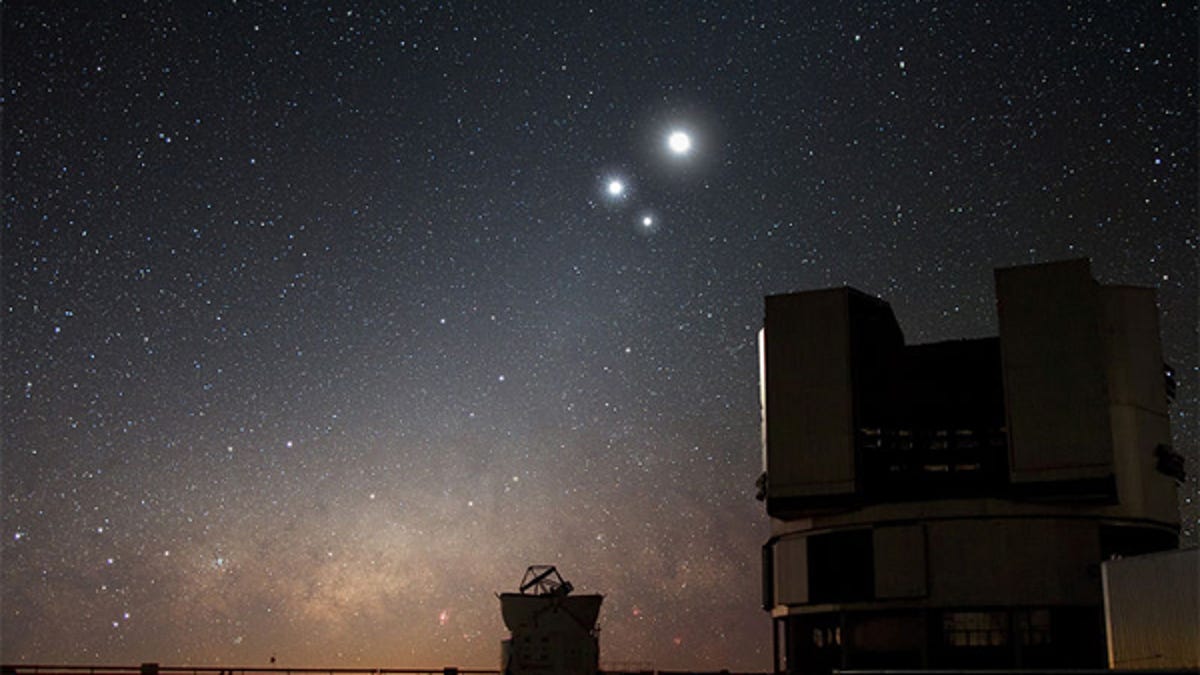Watch the planets dance in a triple conjunction
In just a few days, Jupiter, Mercury and Venus will come together in the night sky in what is known as the Dance of the Planets.

A celestial conjunction viewed on 3 December 2009: the moon, Venus and Jupiter, captured at the ESO's VLT observatory at Paranal, Chile.
(Credit: European Southern Observatory)
In just a few days, Jupiter, Mercury and Venus will come together in the night sky in what is known as the "Dance of the Planets".
Triple planetary conjunctions are relatively rare in the night sky, but astronomers are about to be in for a real treat. The three brightest planets in our solar system as seen from Earth — Jupiter, Mercury and Venus — will be coming together in the sky, "dancing" around each other over the course of several nights, starting 24 May.
If we're lucky, we see a triple conjunction once every two years or so. The most recent was in May 2011; the next won't be until October 2015.
Because the planets in this conjunction are so bright, the dance will be visible to the naked eye, even in densely populated areas — although, if you have access to a telescope or binoculars, so much the better.
According to the Sydney Observatory, the best time to watch is at twilight, when the planets will appear in the north west west (PDF).
The planets will be at their closest, with Jupiter and Venus just 1 degree apart, on 28 and 29 May. All three planets will form a straight line on 31 May as they gradually move apart from each other.
For US observers, the best time to look is also toward the western sky at twilight, with the three planets appearing close to the horizon. From 23 May, the three planets will be close enough together to be viewed through a pair of binoculars, forming a triangle on 24 May before drawing close and orbiting apart.
And, if we're really lucky, someone will take the opportunity to end the reign of the evil vulture-like monsters that have gripped us in an iron fist.
Via science.nasa.gov

